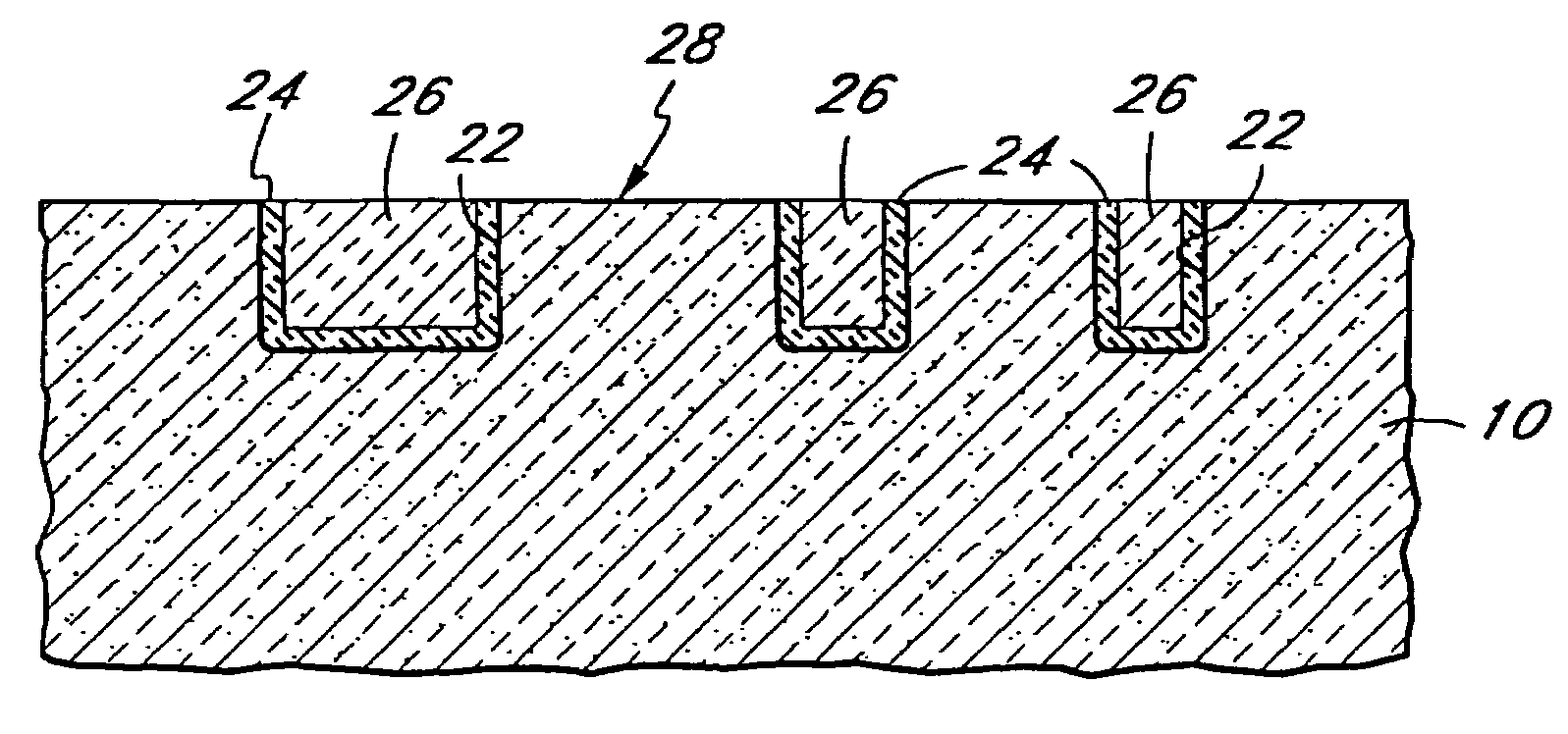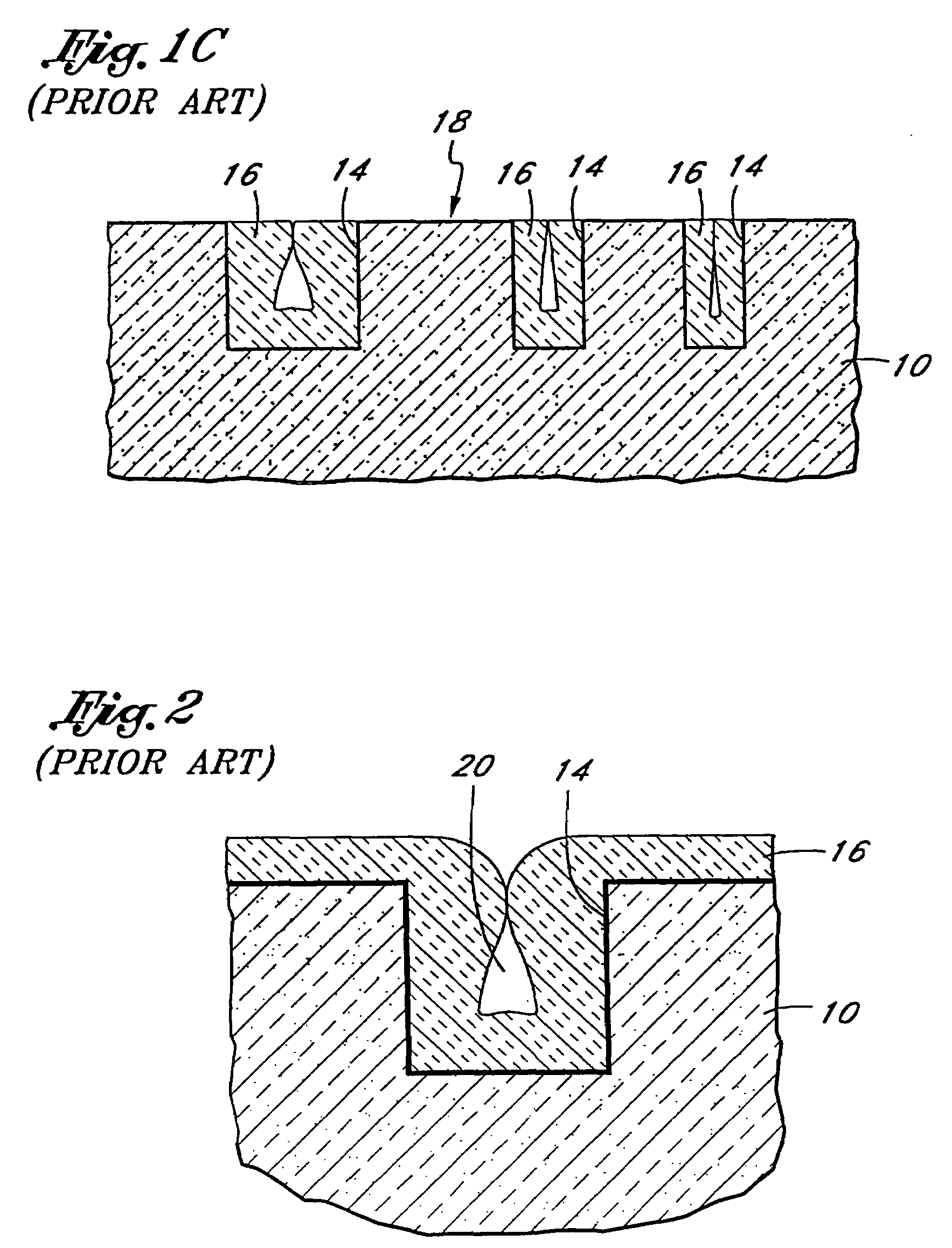Shallow trench isolation using low dielectric constant insulator
a dielectric constant and trench isolation technology, applied in the direction of basic electric elements, electrical equipment, semiconductor devices, etc., can solve the problems of locos isolation, bird's beak, and more problems, and achieve the effect of reducing dimensions, enhancing device isolation characteristics, and advantageous to device density and wafer planarity
- Summary
- Abstract
- Description
- Claims
- Application Information
AI Technical Summary
Benefits of technology
Problems solved by technology
Method used
Image
Examples
Embodiment Construction
[0017]In accordance with the principles of the present invention, an improved shallow trench isolation technology utilizes a trench that is shallower than prior art trenches, and yet provides the same degree of device isolation. The shallower trench helps prevent the formation of voids during dielectric refill. However, despite the smaller dimensions of the present inventive trench, equivalent device isolation is achieved through use of a dielectric refill having a lower dielectric constant ε than in prior art isolation trenches. To better illustrate these inventive principles, a brief description of an exemplary STI process is provided first hereinbelow.
[0018]An exemplary STI process may comprise first a masking, patterning and dry etch process, producing trenches in the silicon substrate as shown in FIG. 1A. The semiconductor substrate 10 is masked and patterned to expose the regions of the substrate to be etched. The mask 12 may for example comprise a resist layer which is resist...
PUM
| Property | Measurement | Unit |
|---|---|---|
| dielectric constant | aaaaa | aaaaa |
| depth | aaaaa | aaaaa |
| depth | aaaaa | aaaaa |
Abstract
Description
Claims
Application Information
 Login to View More
Login to View More - R&D
- Intellectual Property
- Life Sciences
- Materials
- Tech Scout
- Unparalleled Data Quality
- Higher Quality Content
- 60% Fewer Hallucinations
Browse by: Latest US Patents, China's latest patents, Technical Efficacy Thesaurus, Application Domain, Technology Topic, Popular Technical Reports.
© 2025 PatSnap. All rights reserved.Legal|Privacy policy|Modern Slavery Act Transparency Statement|Sitemap|About US| Contact US: help@patsnap.com



